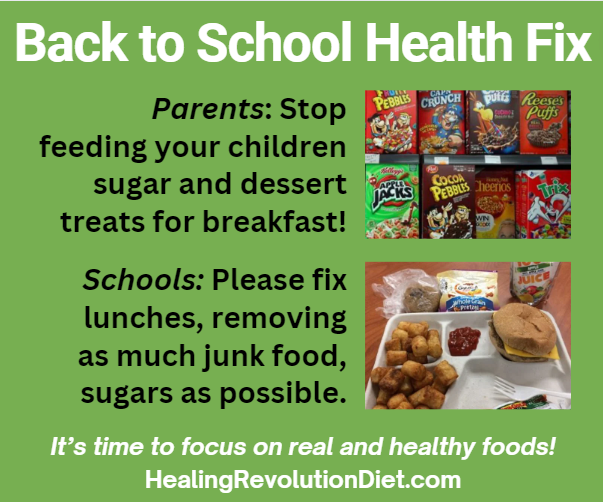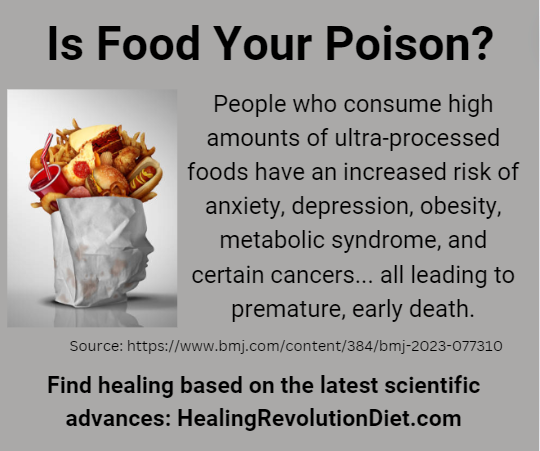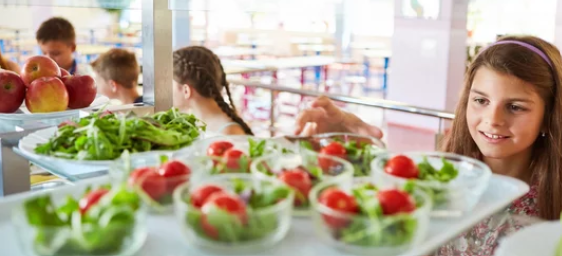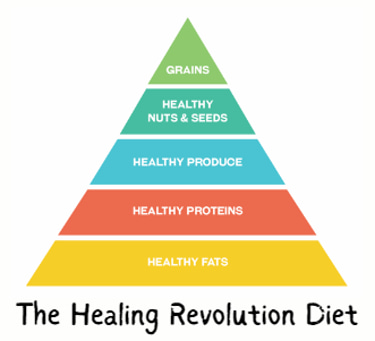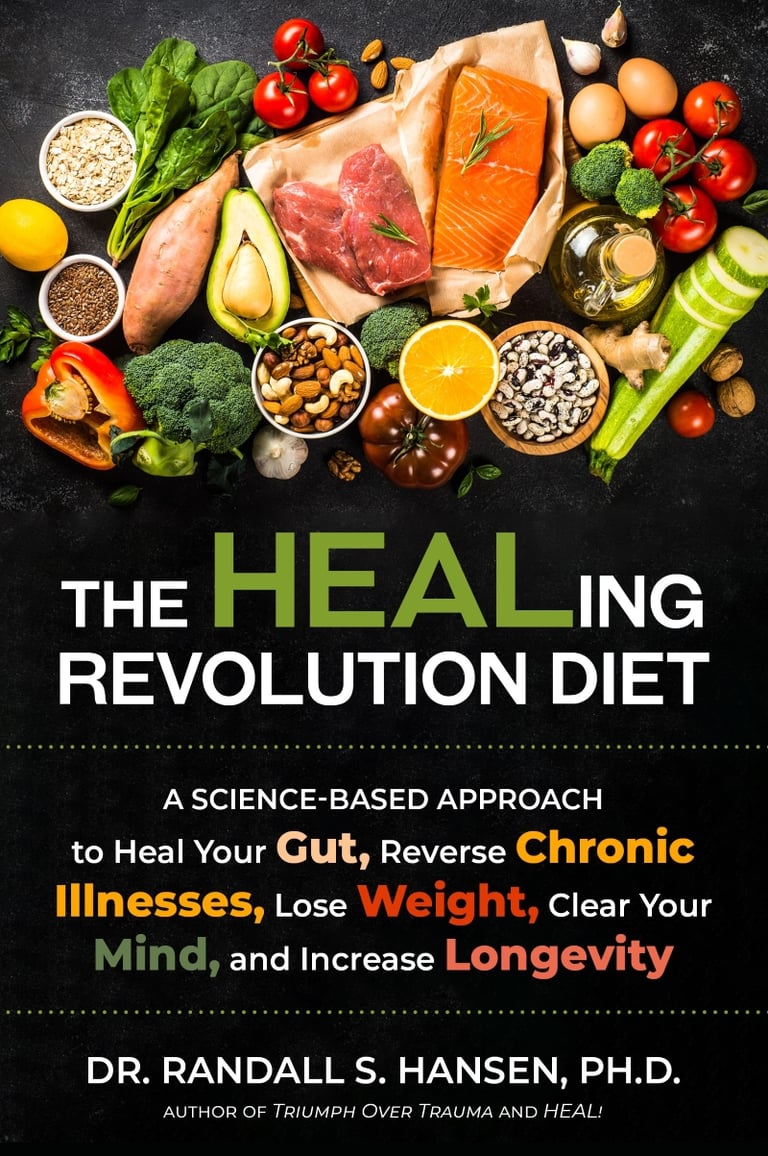Health and Nutrition Tips for Back to School
Written by Dr. Randall Hansen, Ph.D.
The food system in the United States, including our relationship with food and our understanding of nutrition, has been completely compromised by profits and greed.
As children head back to school again, it’s time to focus on what parents and schools can do to improve the health and welfare of the children.
About 95 percent of all foods in a typical supermarket are unhealthy; some would say dangerous, including:
Ultra-processed packaged and frozen foods, meals, sauces, juices, sodas, cookies, breads, chips, and more are imitations of foods we used to eat. Take a frozen pizza, which should have only a handful of ingredients, but contains more than 75. But it’s not just the added ingredients (that include sugars, seed oils, and dangerous additives), but the manipulation of the ingredients to make the foods irresistible and addictive and completely unfulfilling, which makes many people eat more.
Conventionally raised vegetables, fruits, meats, and fish all contain a variety of toxic elements that are simply part of the way a handful of massive agricultural and meat processing companies grow the foods. Conventional fruit and vegetables are farmed with a multitude of chemicals, including fertilizers, pesticides, and herbicides. Conventionally raised meats and fish are put into feedlots where they live in too close quarters, sometimes inside, and fed GMO grains (raised conventionally). Many are given antibiotics routinely while others are given growth hormones – all in the name of fattening up the animals for higher profits.
We have done an extremely poor job both in regulating the food industry, and in educating people about food and nutrition.
That said, both schools and parents have a primary responsibility for the health of children – and sadly, for the most part, both groups are doing a horrific job based on the frightening statistics on children’s mental and physical health.
American children’s health has never been worse. Obesity and diabetes are on the rise in all school-aged children. Adolescents are dealing with a variety of unusual mental and physical conditions, including more allergies, autoimmune conditions, and mental health struggles. People in their 20s and 30s are seeing a rise in cancers and other serious health concerns.
Is it all from the food? No. But a massive part of it is indeed from the food.
What Can Parents Do?
The most important thing parents can do is to educate themselves about nutrition and healthy foods and remove all the bad foods from the pantry, refrigerator, and freezer – and then completely revamp their shopping to focus on providing healthy meals, snacks, and drinks.
Almost every teacher I know complains about the hyperactivity of their students when they first arrive and then after lunch periods. Why? Because parents are giving their children such high-sugar meals that it is like dessert for every meal.
Parents can start by providing healthy breakfasts – ones with extremely low (or no) sugar and limited simple carbohydrates. No more cereals, juices of any kind, jams or jellies, or worse – pastries or cakes. Did you know children’s cereals have lots of added sugar, with most averaging at least 12 grams (3 teaspoons)? Instead, focus on providing a superfood or foods, such as a few eggs (enhanced even more with some avocado on the side).
That same mentality has to carry over to lunches and dinners. If your child takes a lunch with them, make sure it’s a healthy one. If your child buys their lunch at school, make sure it’s a healthy menu.
Simple rules:
Limit sugar in ALL meals, snacks, and drinks. Start looking at the labels of the foods you buy and you will be amazed at how much added sugar is in most products. On average, Americans consume more than 100 pounds of sugar per year, with kids consuming more than adults.
Switch out toxic “vegetable” seed oils for healthy oils, such as avocado or olive. The canola oils and vegetable oils (which is actually soybean oil) go through an industrial process to obtain the oil from the seeds that includes the use of solvents and bleaches. Sounds appetizing, right? These oils are also extremely high in omega-6 fatty acids, which can be inflammatory when used in high amounts. Sadly, most ultra-processed and fast foods use at least one of these seed oils because they are so cheap; soybean oil is now the “food” we consume the most.
Add more fiber to meals and snacks by adding more seeds and nuts to the mix, as well as locally-grown or organic vegetables.
Model healthy behaviors by shopping at farmers markets and trying gardening on your own (either at home or through a community garden).
Find new sources for your meats and fish. Focus on pastured meats and wild-caught fish or game, as well as eggs from pastured chickens. If you can’t locate quality meats at a local farmers market or co-op, try one of these sources:
-American Grassfed Association
Will making some of these changes cost more? Perhaps, though you may be surprised. The bigger issue is a change in attitude in seeing quality food as an INVESTMENT in health, rather than food as a low priority. Finally, I do recognize that healthy food is not available to all families – and that is something we have to fix; access to healthy food should be a basic human right.
What Can Schools Do?
Totally reform all school policies based on the best nutrition research. This means:
Educating all school personnel about nutrition, including the dangerous impact of sugar and ultra-processed foods on the growing brains and bodies of students.
Revamping school lunches to focus on healthy proteins, fats, and fiber while removing sugar-juices and cheap high-carbohydrate breads and snacks.
Removing all unhealthy drinks and snacks from vending machines. Did you know that Coca-Cola was in cahoots with many school districts, providing money in return for Coke machines. Ugh.
Ending any kind of sponsorships with unhealthy companies that provide dangerous products for children, including all soda and fast food companies.
Bring back a nutrition/home-cooking class for all students, but with a focus on cooking from scratch and metabolic health – and the impact that food has on health.
Fix or start a gardening program. Many schools have boarded up greenhouses that can be returned to action. Others can encourage a community/school garden. Studies show students are much more likely to eat vegetables and salad greens raised by their classmates.
Stop fostering sugar spikes by allowing birthday celebrations that are basically sugar celebrations pretending to be birthdays. Change policies to only allow approved (and healthy) treats for birthdays and other celebrations.
Final Thoughts on Healing the Health of Our Children
Fixing the foods our children eat is the most important thing you can do for the health and well-being of your child. We are literally setting our children up for a life of chronic and deadly conditions if we do not make radical changes.
Food is number one. If you can only do one thing, make sure your children eat more real foods and much less – or no – garbage foods masquerading as fun and healthy foods.
But, here are a few other things parents can do for the health of their children:
Focus on sleep – and a long, uninterrupted, and consistent sleep schedule. Keep a regular bedtime. Sleep is a critical time for the body and brain to do repair and restore work, and it is especially important for growing minds and bodies.
Limit screen time. Many studies show the dreadful impact of too much time on screens, and especially when some of that time is on social media.
Make movement a priority. The sedentary lifestyle that has become the norm for many people is extremely unhealthy. Push schools to keep or even extend recess times, ideally a few times throughout the school day. The same applies at home and on the weekend. Moving often is essential.
Be vigilant about any type of bullying and take action with the school as necessary. Monitor texts and social media to keep abreast of communications that may have a negative impact, and intervene as necessary.
Openly talk about mental health and model/discuss healthy coping methods. The mental health crisis affecting this county is having an even greater impact on our children. Stress that your children can tell you anything – and reinforce the concept by accepting what they tell you.
Additional Food/Diet/Nutrition Resources
Order your copy of The HEALing Revolution Diet today!
In the meantime, if you're looking for more diet and nutrition information, please see more at RandallSHansen.com.


